Iced Matcha Latte takes just minutes to make but will keep you energized all day long. This creamy and refreshing green tea powder drink is packed with antioxidants, too. Learn how to make this ice-cold beverage at home that tastes better than Starbucks. {Vegan-Adaptable}
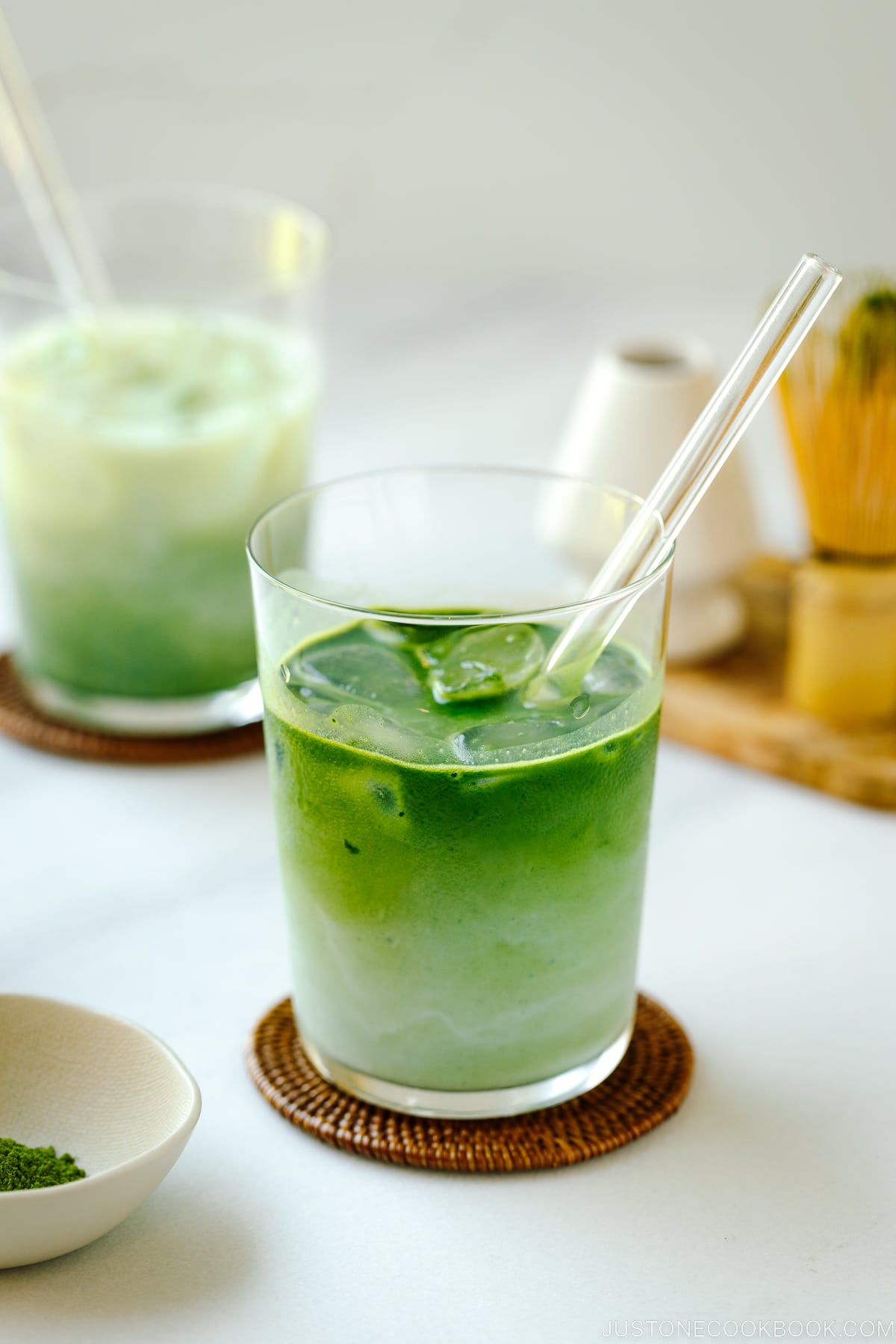
I love sipping Iced Matcha Latte in summertime and warm Matcha Latte in wintertime. I consider this my healthy ritual and is something that I look forward to in the morning. While I still crave my cold brew coffee, I appreciate the stable energy and focus matcha provides.
If you’re looking to switch up your morning beverage, you need to try this iced matcha latte. It’s easy to make your favorite cup at home! I’ll show you my simple method—how to prevent clumps and adjust sweetness to your taste.
Table of Contents
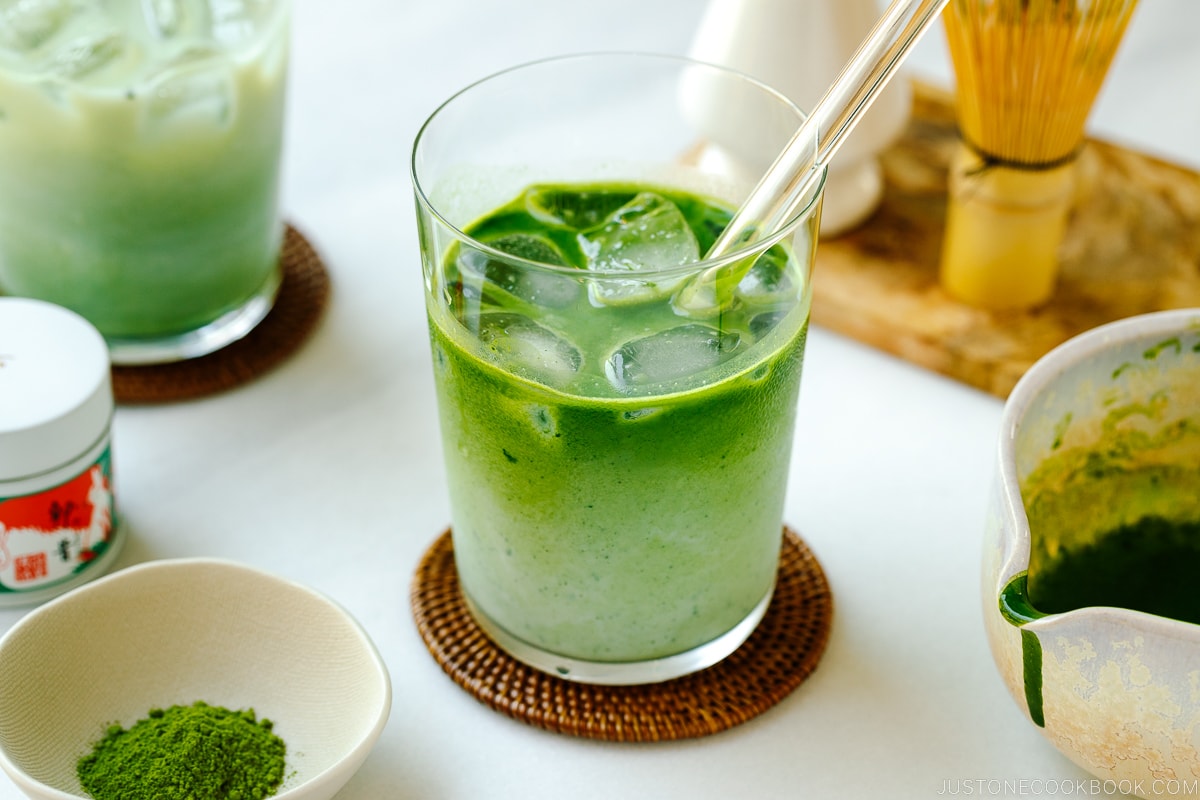
What is Matcha?
Matcha (抹茶)—pronounced as “ma(t)-CHA”— is a very finely ground powder made of green tea leaves. It is the only tea in which the whole leaf is consumed, and because matcha is made from shade-grown tea leaves that are treated with great care, it delivers a more concentrated source of antioxidants and amino acids.
Japan has a long history of consuming matcha but it was first enjoyed in the Japanese tea ceremonies called chanoyu or sado. These days matcha has become one of Japan’s beloved flavors in making all sorts of beverages and desserts. Not only is it visually attractive, but matcha’s unique flavor and health benefits also have contributed to a surge in popularity.
When it comes to making beverages, you can enjoy matcha in pure tea form by mixing it with only hot water, in smoothies, or as a creamy, frothy matcha latte.
If you wish to learn more about matcha, read this post.
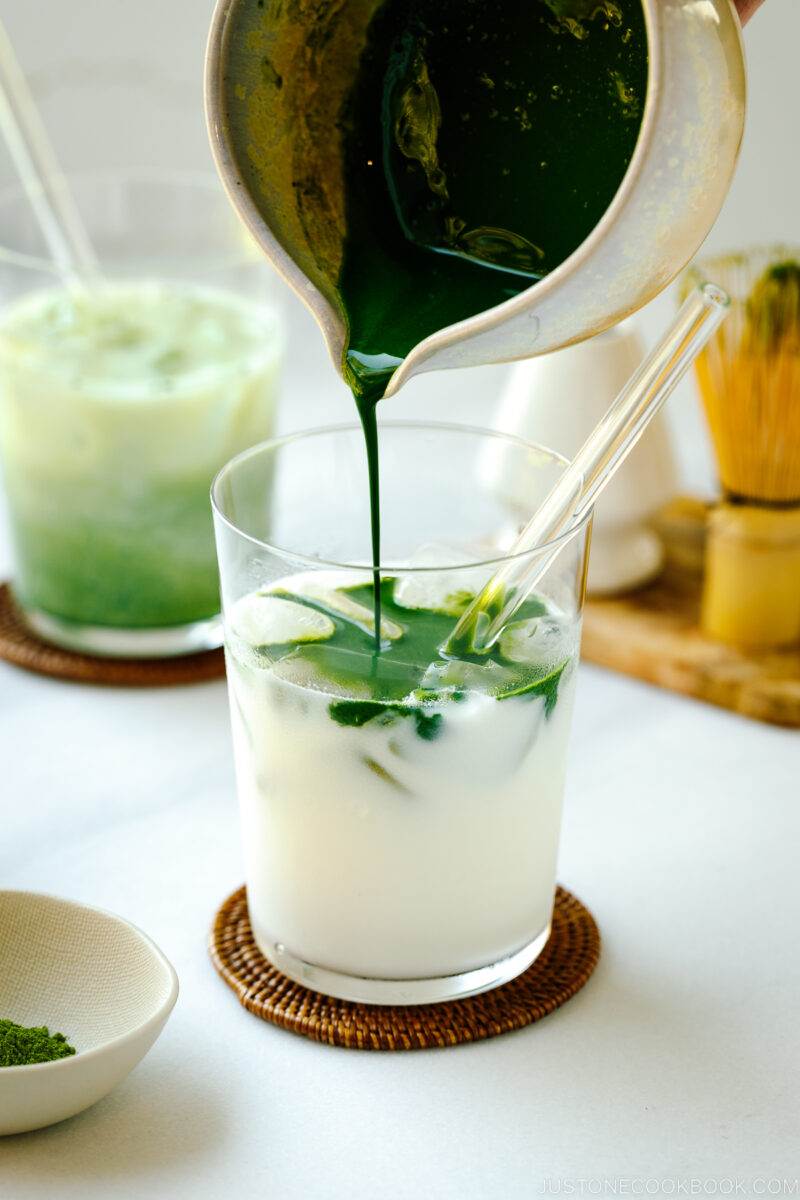
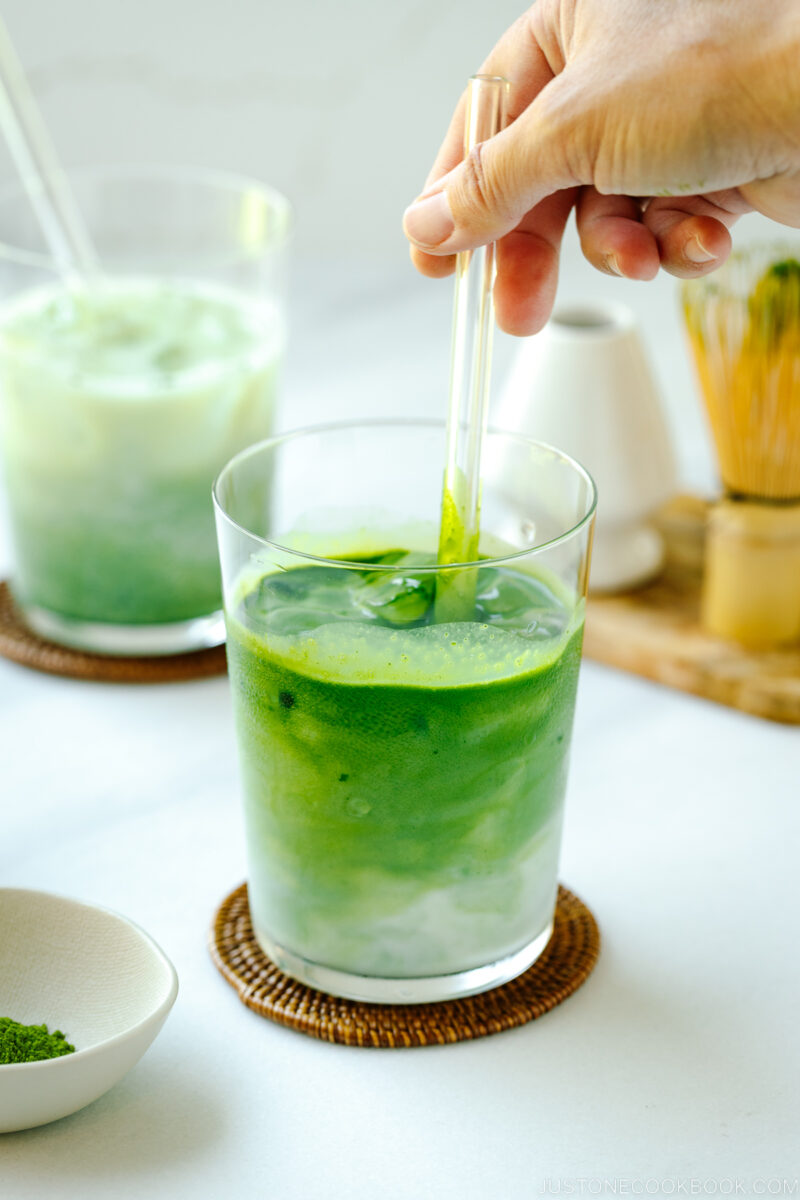
How to Make Iced Matcha Latte
The Ingredients You’ll Need
- Matcha, also known as powdered green tea or green tea powder
- Hot water, about 176ºF or 80ºC
- Milk – Whole milk is best but I use 2% in this recipe. For vegan/vegetarian, you can use oat milk or almond milk.
- Simple syrup – All you need is sugar, water, and <5 minutes to make simple syrup! You can use other sweeteners, but I recommend making a big batch of simple syrup.
The Cooking Steps
- Add ice cubes, milk, and simple syrup to a glass cup.
- Whisk matcha and hot water until no lumps remain. The matcha should be smooth and a little foamy.
- Assemble: Pour the matcha mixture into the milk glass. Enjoy!
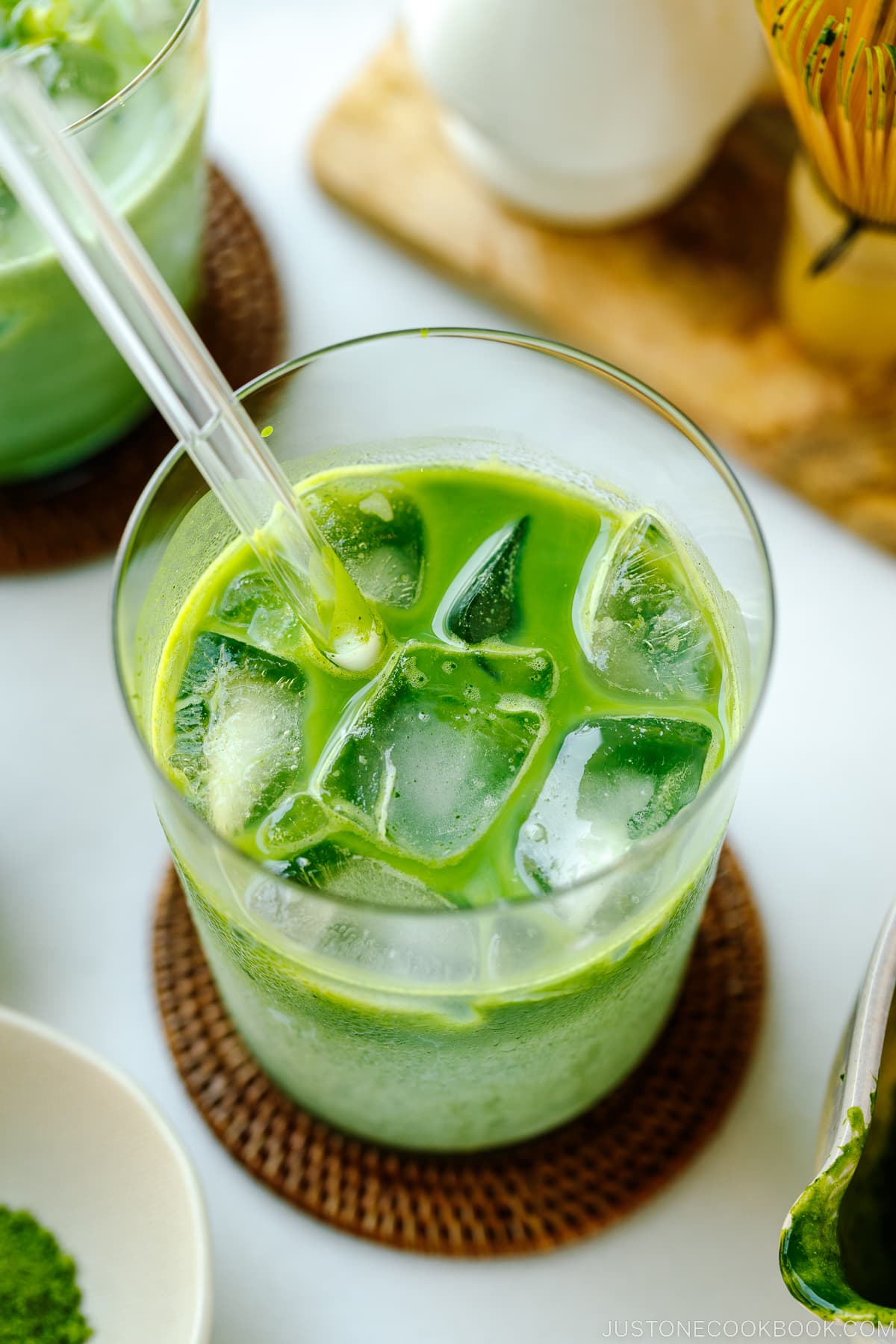
Matcha Mixing Tips and Tricks
- Always use hot water (not boiling water, which ruins matcha; about 176ºF or 80ºC) for mixing matcha. Cold or room temperature water does not mix well. Because matcha is a fine-grained tea powder, it mixes well but does not dissolve in water.
- Use a super-fine bamboo whisk (it’s called chashen) for mixing matcha. If you are using a regular whisk, sift matcha into a bowl with a fine-mesh strainer before adding hot water to avoid any clumps.
- This is optional, but using a spouted matcha bowl (it’s called katakuchi) makes whisking and pouring much easier than a regular bowl due to its size and shape. I use this beautiful katakuchi from Only Way Is Up.
Where to Buy Matcha
Making matcha beverages at home is cheaper (and healthier) than getting your fix from Starbucks or coffee shops in the long run. So, if you’re looking to incorporate matcha into your wellness routine, it’s worth paying a little more for high-quality matcha powder. These two brands are my favorite:
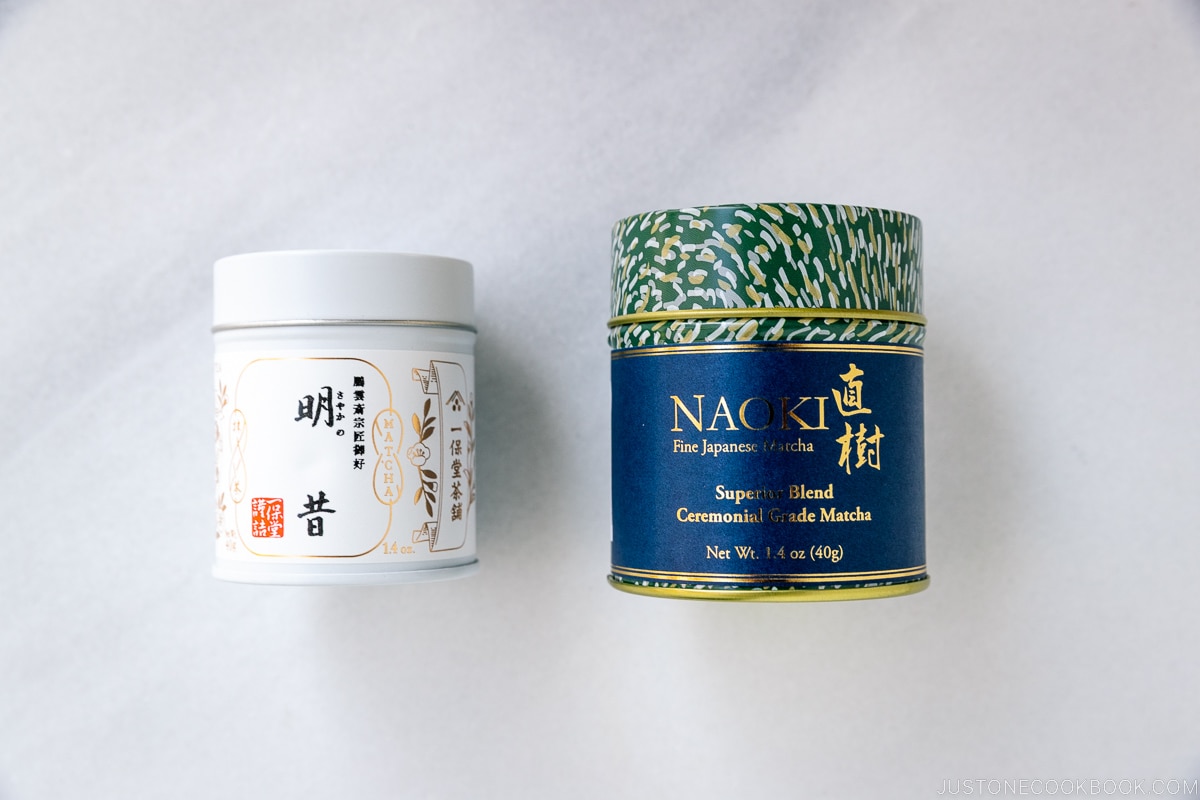
My personal go-to matcha brand is Ippodo Tea (一保堂) from Kyoto, Japan. They have a store in NYC and you can also purchase their tea and matcha on Amazon.
You can find a small tin or bag of matcha powder imported from Japan at Japanese grocery stores like Mitsuwa, Marukai, and Nijiya. The quality of matcha is generally acceptable.
Read the next section for matcha shopping tips!
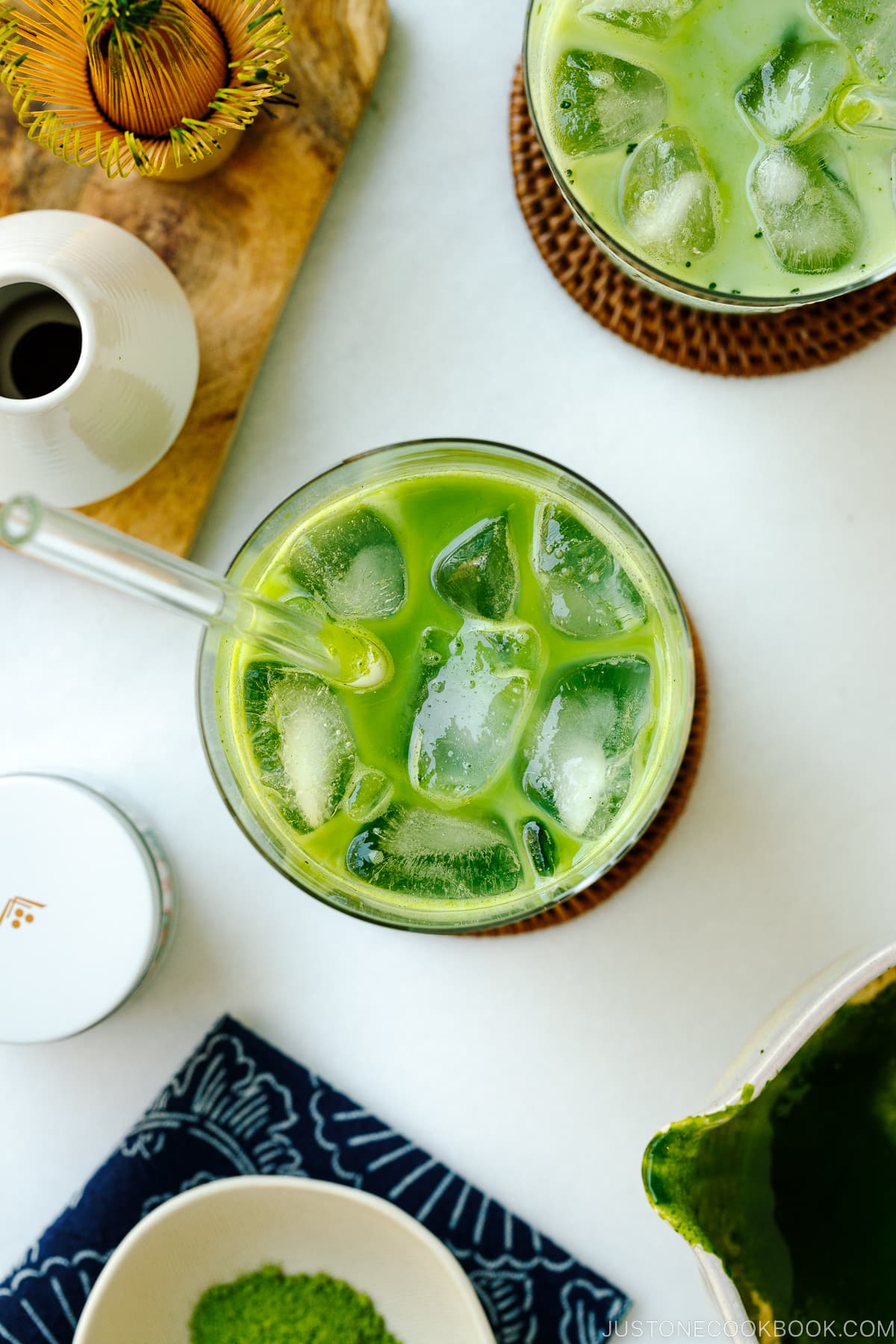
Matcha Shopping Tips
These days there are so many brands of matcha available online, but here are a few tips when you’re shopping online.
Matcha Grades
In general, you can find two grades of matcha: Ceremonial or culinary grade. The highest-quality ceremonial grade matcha is used for a tea ceremony and the culinary grade is for cooking and baking.
For beverages like matcha lattes, I recommend ceremonial grade.
What Should I Look For?
Quality matters when it comes to buying matcha powder. First, check the color. The powder should be a vibrant bright green color, not yellowish or brownish-green. The color indicates its quality and its proper storage and shipping.
Also, look into where it was harvested. The regions famous for green tea are Kyoto, Shizuoka, Fukuoka, and Kagoshima prefectures.
Lastly, make sure it’s 100% matcha and avoid matcha products that come with other ingredients such as sugar or natural flavorings.
How Long Does Matcha Keep?
Matcha powder oxidizes quickly, so it’s best to use it within two to three weeks of opening the package.
Oxidized matcha is safe to consume, but it loses its rich flavor and bright vibrant green color. It also won’t carry all the same health benefits over time.
Get a Small Tin, Not a Value Pack
I strongly recommend getting a small tin, about 20-40 grams (0.7-1.4 oz) for making matcha beverages at home. Do not buy a big value pack unless you use a lot of matcha for your cafe or bakery. Even high-quality matcha will become dull with time. Remember that matcha must be used within 2-3 weeks!
A small 20-40 gram tin of premium-quality matcha costs about $30-45 and up. I get this premium-quality matcha (40 g) from Ippodo, which costs $35. One cup of iced or hot matcha latte would roughly cost $2.70 plus milk.
Best Way to Store Matcha
It is important to store matcha away from oxygen, strong scents, light, high temperature, and high humidity.
After opening the package, seal the bag tightly (don’t forget to remove air) and store it inside the cool pantry, and consume it within 2-3 weeks.
I used to store the package of matcha in the refrigerator and freezer, but I learned that the scent of other ingredients can easily transfer inside the refrigerator and freezer. However, for long-term storage, you can freeze the unopened package. Make sure to return it to room temperature before opening.
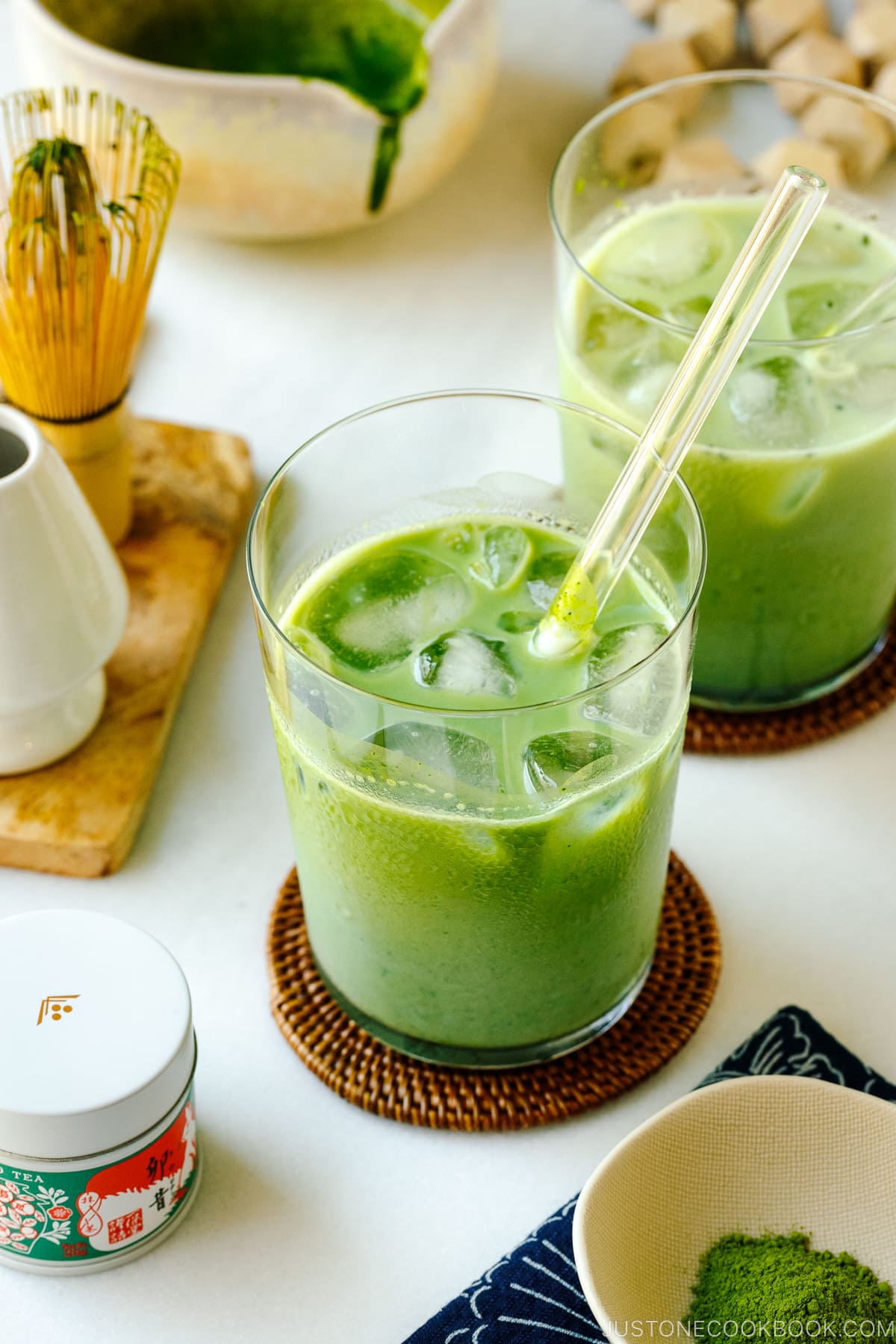
Recommended Tools to Make This Recipe
- A bamboo whisk – To minimize clumps, I highly recommend getting a bamboo whisk called chasen, which blends matcha and liquid really well without much effort and aerates so that matcha has foam and froth. Alternatively, you can get this flat whisk, which works great for whisking a small amount of dry and wet ingredients.
- A spouted matcha bowl (optional) – Called katakuchi, a spouted bowl is specially designed to make whisking and pouring much easier for matcha. I use this beautiful katakuchi from Only Way Is Up.
Other Matcha Drinks & Desserts

Wish to learn more about Japanese cooking? Sign up for our free newsletter to receive cooking tips & recipe updates! And stay in touch with me on Facebook, Pinterest, YouTube, and Instagram.
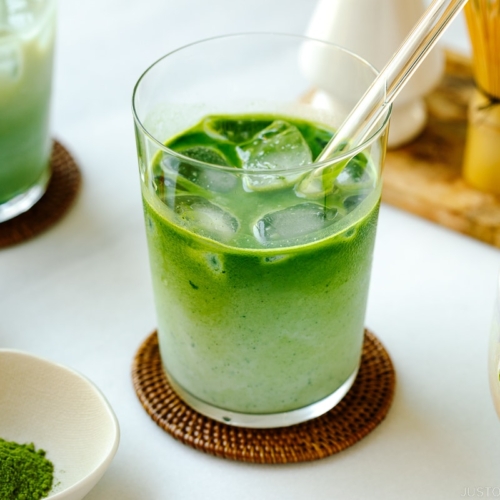
Iced Matcha Latte
Video
Ingredients
- 1 cup ice cubes
- ¾ cup milk (or substitute oat milk or almond milk)
- 1–2 Tbsp Homemade Simple Syrup (follow my recipe; all you need is sugar, water, and 5 minutes!)
- 1½ tsp matcha (green tea powder)
- 2 Tbsp hot water (175ºF, 80ºC)
For the Simple Syrup (sugar-to-water ratio is 1:1)
- ½ cup sugar
- ½ cup water
Instructions
- Gather all the ingredients.

To Make the Simple Syrup
- If you haven‘t made the simple syrup, follow this recipe: Place ½ cup sugar and ½ cup water (equal parts) in a saucepan. Heat over medium heat and whisk until the sugar dissolves completely. Remove from the heat and let cool completely. Transfer it to an airtight container. Simple syrup will last for up to 1 month in the refrigerator.

To Make the Iced Matcha Latte
- To a tall glass (I use this glass), add 1 cup ice cubes and ¾ cup milk.

- If you are sweetening your drink, add 1–2 Tbsp Homemade Simple Syrup or another choice of sweetener. Set aside.

- Into a bowl with a pouring spout (I use a katakuchi), add 1½ tsp matcha (green tea powder) and 2 Tbsp hot water (175ºF/80ºC). Optionally, you can sift the matcha to remove any lumps. Tip: Why hot water? Matcha does not dissolve well with cool/cold water.

- Using a bamboo whisk (it‘s called a chasen) or a flat whisk, whisk briskly back and forth, drawing a letter W. Mix until no lumps remain, about 20 seconds. The matcha mixture should be smooth and a little foamy. If it‘s not fluid, you can add a tiny bit of water (a teaspoon at a time) until it‘s a pourable consistency. Then, pour the matcha mixture into the ice-filled milk glass. Tip: Use as little water as required to make a fluid suspension that you can pour into the iced milk. We want to keep a rich, concentrated flavor by limiting the amount of water we use.

To Serve
- Stir and enjoy!

Nutrition
Editor’s Note: This post was originally published on October 5, 2015. It’s been republished with new video and images on August 15, 2023.
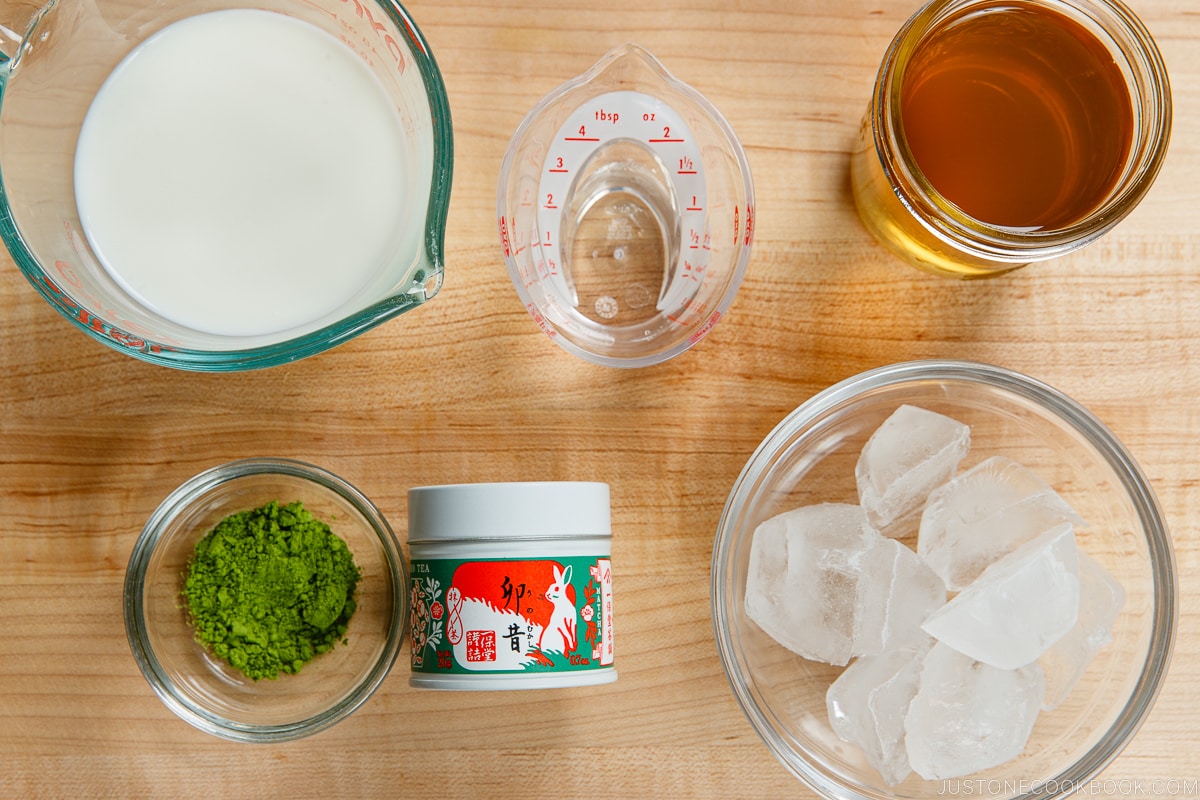
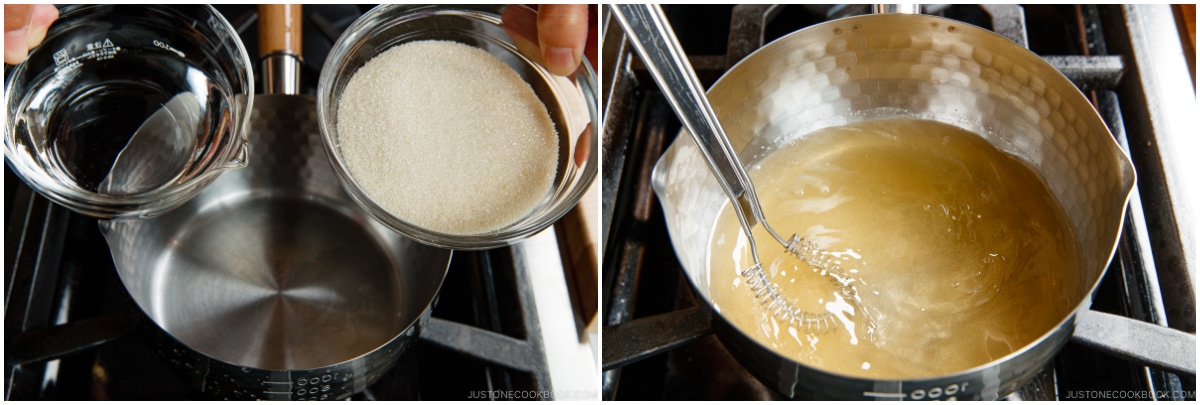
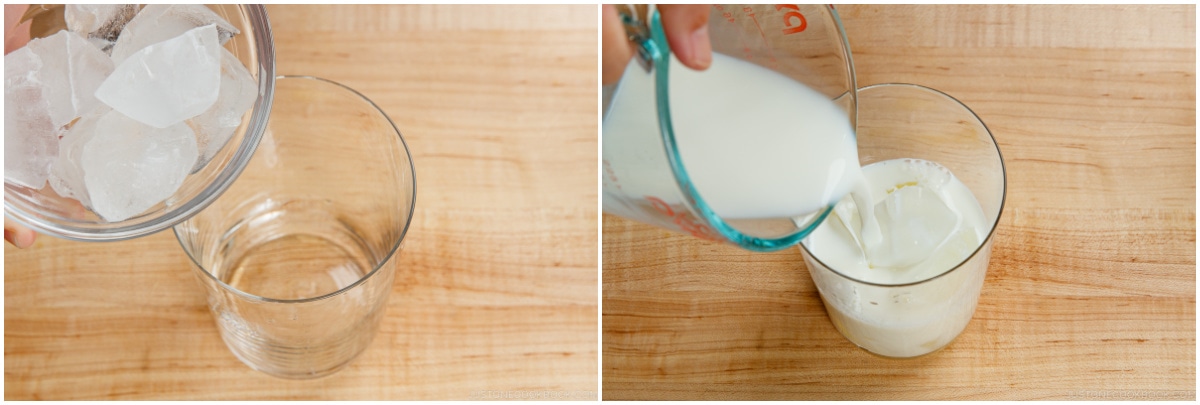
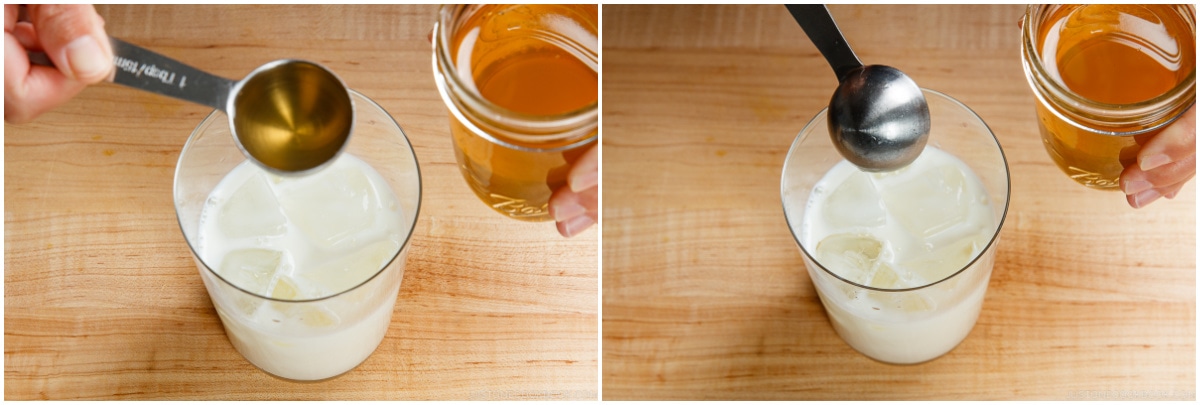
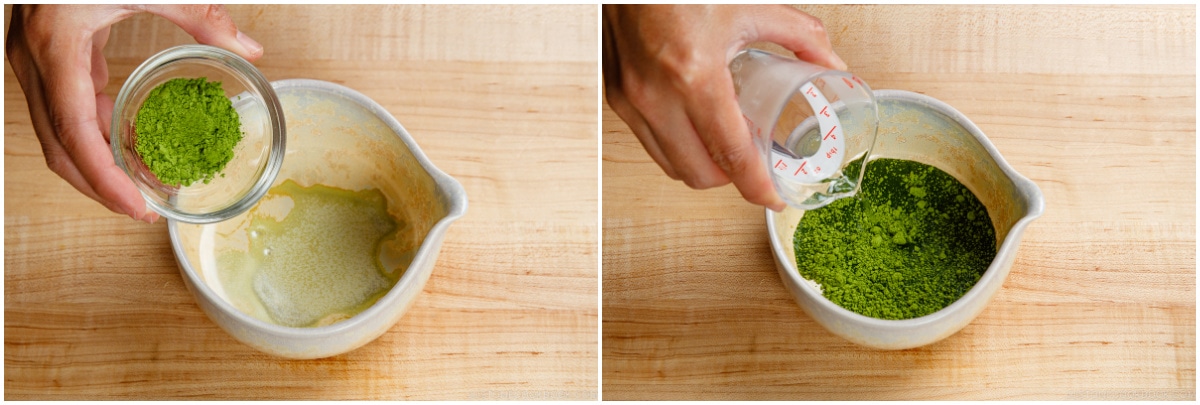
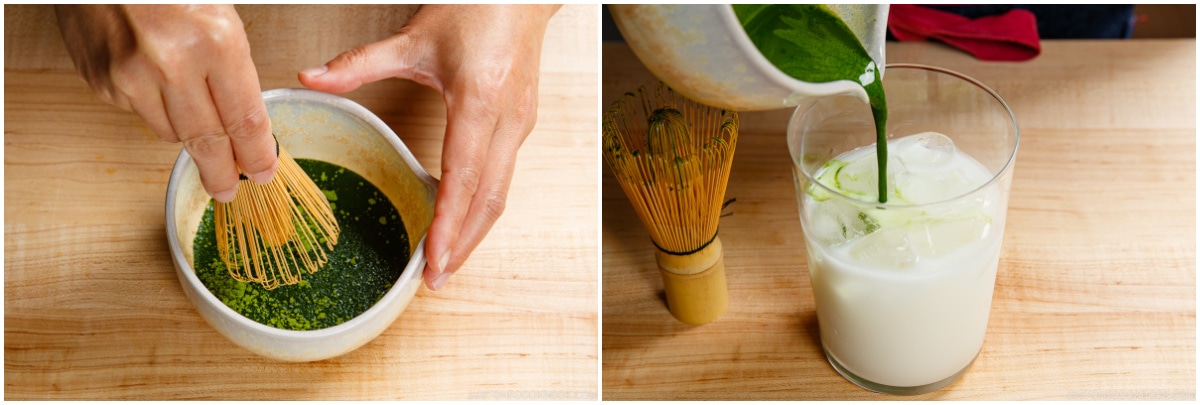
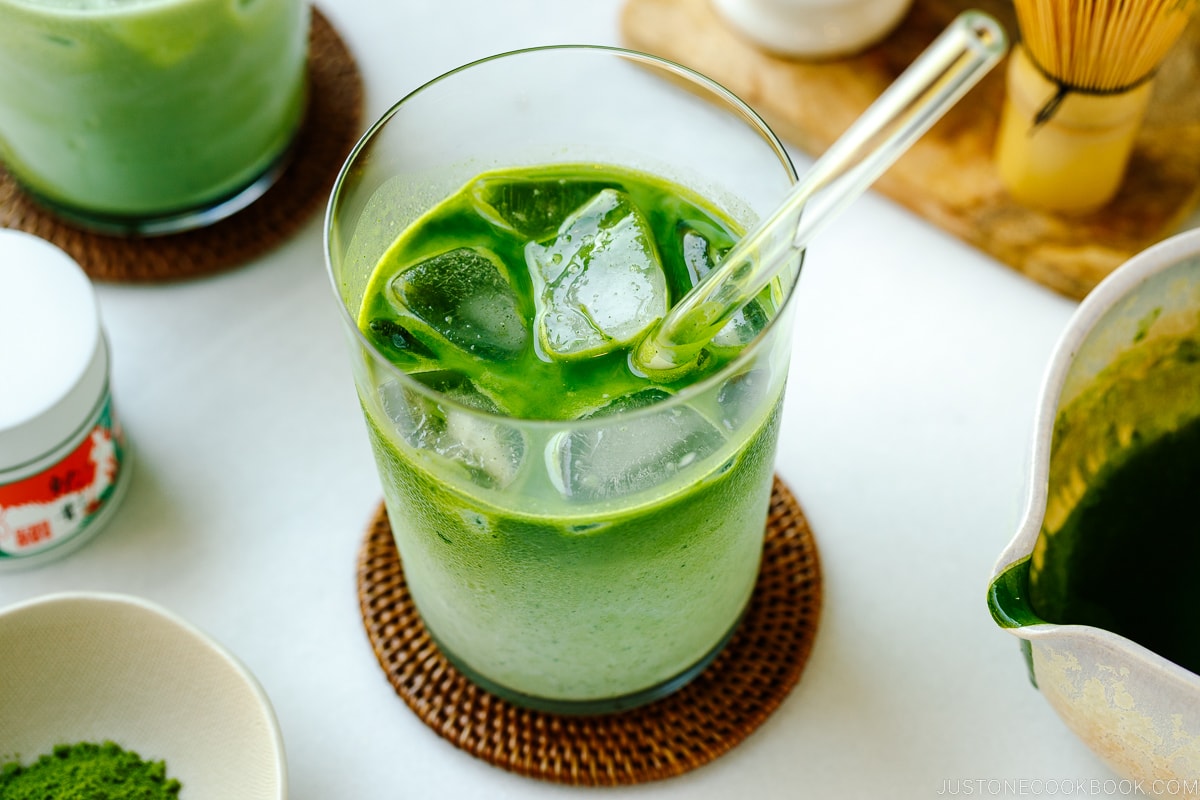










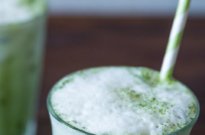
Have you tried matcha from Tenzo Tea? I like it better than most matcha that I’ve tried. I haven’t tried the Ippodo Sayaka matcha, but will now!
Hi, Genesis! We have never tried the Tenzo Tea brand. We hope you enjoy Ippodo as well!
Thank you for reading Nami’s post and trying her recipe!
Our matcha just arrived and we wasted no time whipping up a fresh latte.
It’s good! Nice, deep rich green color and fresh aroma. Smooth tasting, fuller flavor and less bitter than our last brand that cost twice as much per ounce. Think we have a winner here, your experience may differ.
Here are some pics. Enjoy!
Hi Peter! Thank you for the update!🍵
Hi Nami,
My green tea latte has little green balls. What is the optimum temperature and amount of water to use to dissolve the matcha? How do I get rid of the green balls?
Many thanks in advance!
Hi Wei, Thank you very much for trying Nami’s recipe!
Please use 2 Tbsp of hot water (175ºF/80ºC), and whisk well until there is no lump. (Step 1) You can also try sifting Matcha powder before adding the hot water.🙂
We hope this helps!
Konnichiwa Namiko-san! Thank you for sharing you knowledge and skills on this wonderful website of yours! My family loves your recipes!
Just ordered some matcha from this company on Amazon: Jade Leaf Organic. It looks promising: it’s from Japan, organic, culinary grade, and, as of this writing, a very good price – as low as $3.75 an ounce when purchased in bulk. I’m not affiliated with this brand, we just love matcha in this house and were looking for a better priced product than we can find at our local Japanese grocery store.
We make our matcha lattes with either organic unsweetened vanilla almond milk or homemade organic vanilla oat milk. Both are delicious!
Hope this of help to all,
-Peter-
Hi Peter! Thank you very much for reading Namiko’s post and for your kind feedback!
Namiko and JOC team are so happy to hear you and your family loves JOC recipes!
Thank you for sharing the green tea powder information.🙂
Love matcha! and enjoy home frothed lattes every day. Thank you for sharing this iced latte recipe…didn’t think to liquify the matcha first…makes sense.
Hi Karen! We are glad to hear you enjoy this Iced Green Tea Latte recipe!
Thank you very much for your kind feedback.
[…] is officially here, and one of our favorite treats to make this season is Iced Matcha Latte and Matcha Ice Cream. To share the love, we’ve partnered with Japanese Green Tea Company to give […]